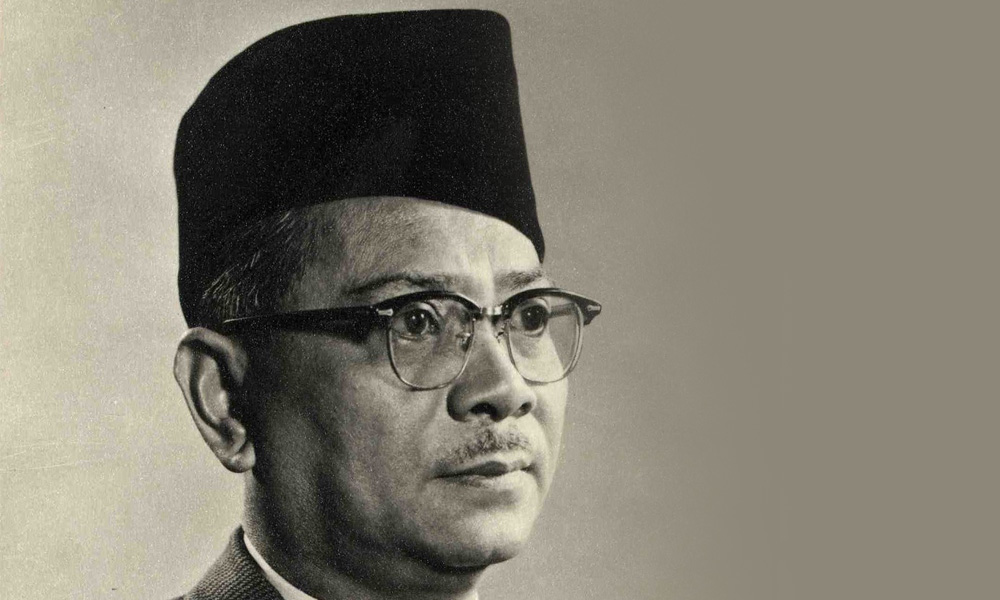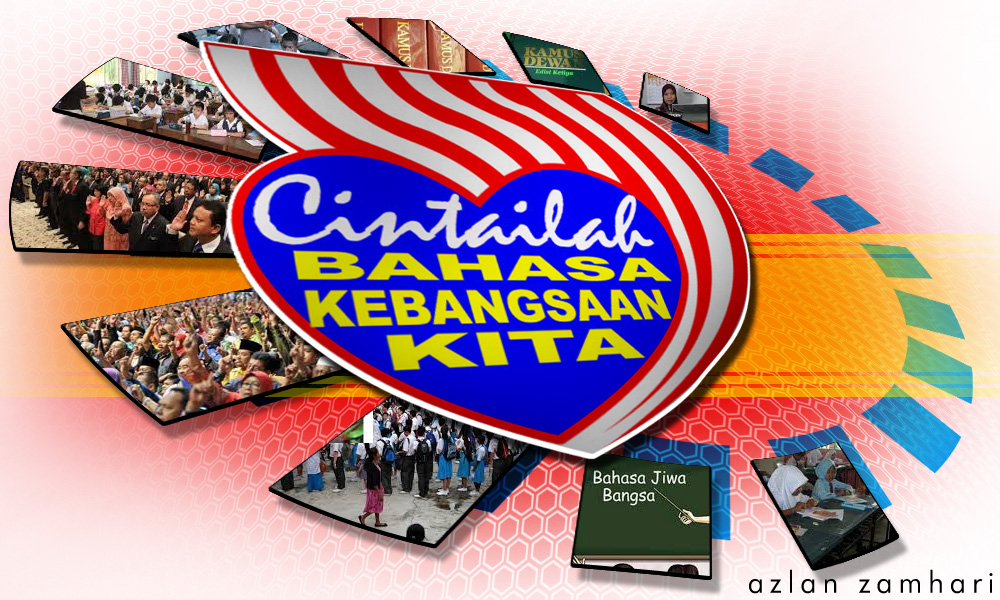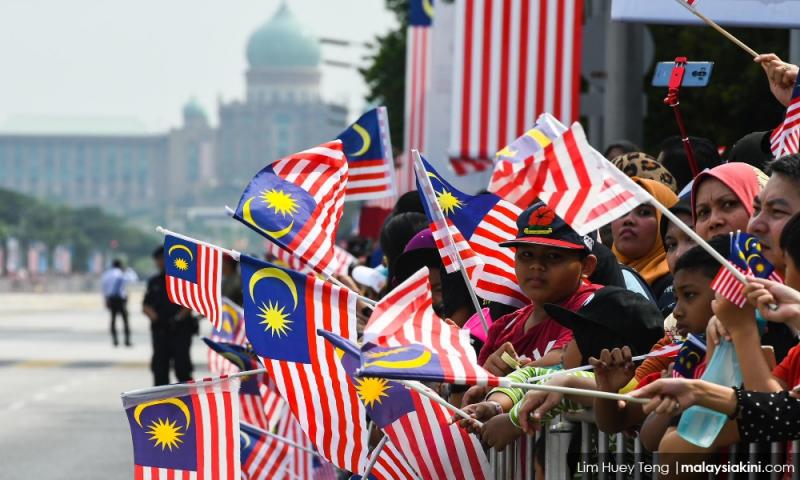What or who is Bangsa Malaysia?
COMMENT | Lately, discourses on “Bangsa Malaysia” have become more frequent. So, why don't we join in the discussion as well?
Lately, many heart-breaking events have happened, and this has led us to want to re-evaluate how to address them and move forward.
These are nation-building issues, such as the national and state flags causing upheaval in the social media.
Wrong display of the flags, whether intentional or otherwise, has led to the questioning of loyalty and patriotism.
Similarly, the issue of the singing of the national anthem in Mandarin and Arabic courted controversies.
These were followed by the issue of bringing into Malaysia the ashes of the late communist leader Chin Peng, whose name triggered nostalgic bad memories, especially for the security forces and the victims’ families.
This chain of events is antagonistic to the fundamentals and political science of this country.
Some might have forgotten that our country is multiracial and multi-religious, and was founded on many core values that are shared by the various communities.
Malaysians, especially the younger ones, who did not go through the suffering during the rule of the Malayan Union in 1945, the violent upheaval during the attempt by the Communist Party of Malaya (in 1948) to wrest power after the Japanese surrender, the communal riot and bloodshed of 1969 and the economic recession of the early 1980s may not be able to relate to and appreciate why older generations are very sensitive to these sentimental events that brought about the multi-racial, multi-ethnic Federation of Malaya, and later, Malaysia.
Perhaps the major flaw of our nation's founding policy, especially after the formation of the Federation of Malaysia in 1963, was that there was not enough political will to carry through the multi-racial, multi-ethnic nation-state that was founded based on many good values such as cooperation, moderation and the spirit of give-and-take.
The British territories that agreed to form Malaysia - North Borneo (Sabah), Sarawak and Singapore - were clearly bounded in many aspects, especially in political, economic and social.
But the political will to implement and honour these “agreements” faded as soon as the new nation-state was in operation.

After 57 years of the formation of the Federation of Malaysia, it is most unfortunate that some territories such as Sarawak and Sabah are still unhappy and pushing for independence or succession, arguing with the central government over the terms of oil royalties and state powers that they feel are being increasingly centralised.
History reminds us that Brunei’s last-minute refusal to be part of the Federation of Malaysia was the failure to agree on the terms of oil issue between the Brunei Sultan and our first prime minister Tunku Abdul Rahman (above).
But backward, smaller and poorer areas such as Sarawak and Sabah were persuaded to join the Malaysian Federation by various parties, including the power that oversaw and secured the two territories.
Likewise, Lee Kuan Yew was aware that Singapore was at the forefront of the communist threat, and that it did not have enough resources to resolve social issues such as housing problems, and the emergence of socialist parties and powerful NGOs.
Therefore, Lee had no choice but to join the Federation of Malaysia.
In many ways, Lee was very grateful to Tunku. Although the island state remained in the federation for a short period, that period provided the breathing space to thwart the communist threat and influence from settling in Singapore.
After 57 years since the formation of Malaysia, what has happened to our country?
Are our people really united in the name of Malaysia?
Is language policy such as Bahasa Melayu as the national language helping in creating a united “Bangsa” Malaysia?
Apparently, we are still separated by ethnicity and readily identify ourselves, first, as either Malay, Chinese, Indian, Iban, Kadazan or other races.
We are not united as Bangsa Malaysia in any real sense of the term.
The terms Bangsa Malaysia and Bahasa Malaysia are two important terms but lack a distinct definition.
What is Bahasa Malaysia? Who and what does a Bangsa Malaysia look like, in terms of defining characteristics?

In the 1980s, the term Bahasa Melayu was changed to Bahasa Malaysia.
Perhaps this was done to placate the non-Malays.
There was no need for that as the language is still recognisably “Malay”.
Changing the name was merely rhetoric. Bahasa Melayu and Bahasa Malaysia are two different things altogether.
Bahasa Malaysia includes languages spoken by Malaysians such as Mandarin, Tamil, Kadazan, and Iban.
Similarly, Bangsa Malaysia has not been properly, clearly and authoritatively defined.
What or who is a Bangsa Malaysia? What does Bangsa Malaysia display, in terms of characters, such as culture, language and the way of life?
The term first surfaced in 1991, when Vision 2020 was launched. Till this day, there is no authoritative definition of what constitutes Bangsa Malaysia.
Recently, I attended many seminars on nation-building, where many Malay educationists also talked about Bangsa Malaysia.
There is a general agreement that they are ready to accept a larger concept like Bangsa Malaysia, but they, too, are still vague on what Bangsa Malaysia really is.
In the recently concluded 2019 Umno General Assembly, the party Youth chief was reported to have spoken of the country as belonging to all races.
Of course, this is obvious. Malaysia belongs to those who are legally part of a Bangsa Malaysia, but who is he referring to as Bangsa Malaysia? The question still does not have an answer yet.

In such a flux situation, there is an urgent need to formulate new policy and to further institutionalise the Bangsa Malaysia.
In what form and how this can be realised may need more discourses among various segments of the society that are parts of the whole process.
However, there needs to emerge a political will to tackle this long-standing issue in nation-building.
Our next-door neighbour, Indonesia is undoubtedly doing a little better than us in forging their nation-state through their Pancasila ideology.
We have the Rukun Negara, but this is also not really helping in pushing for the emergence of Bangsa Malaysia.
The ideology of Bangsa Malaysia must transcend racial and religious boundaries.
What has been agreed in the Federal Constitution remains, but in order to move forward, we must have a Bangsa Malaysia.
For a start and for some time, Malaysians overseas, for whatever reasons, have displayed this Bangsa Malaysia spirit.
When asked of their origin, they would answer "I am a Malaysian, Bangsa Malaysia". But this spirit fades when they are closer to home. Why?
When speaking with foreigners abroad, no Malaysian would introduce the Proton car as a Malaysian Chinese car, the Petronas Twin Towers as belonging to the Malays, and the Malaysia football team as Chinese-Indian-Malay, but are proud to introduce them as Proton Malaysia, Petronas of Malaysia and the Malaysian football team respectively.
Until these fundamentals are addressed, discourses on them will oscillate from defining them based on the dominant race.
AL-AZHARRI SIDDIQ KAMUNRI's area of study is in politics and government, and he has interests on issues relating to nation-building, national security and patriotism.
The views expressed here are those of the author/contributor and do not necessarily represent the views of Malaysiakini.RM12.50 / month
- Unlimited access to award-winning journalism
- Comment and share your opinions on all our articles
- Gift interesting stories to your friends
- Tax deductable
